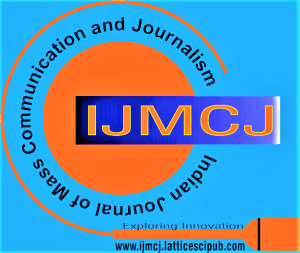![]()
A Content Analysis of Journalistic Framing of Chemical Contamination of the Cape Fear River
Hiya Bandyopadhyay
Hiya Bandyopadhyay, Communication, Rhetoric & Digital Media, North Carolina State University, Raleigh, The United States of America. Postal address: CRDM, Caldwell Hall 106F, Campus Box: 8101, 2221 Hillsborough St, Raleigh, NC 27607.
Manuscript received on 15 November 2022 | Revised Manuscript received on 21 November 2022 | Manuscript Accepted on 15 December 2022 | Manuscript published on 30 December 2022 | PP: 28-41 | Volume-2 Issue-2, December 2022. | Retrieval Number: 100.1/ijmcj.B1026122222 | DOI:10.54105/ijmcj.B1026.122222
Open Access | Ethics and Policies | Cite | Mendeley | Indexing and Abstracting
© The Authors. Published by Lattice Science Publication (LSP). This is an open-access article under the CC-BY-NC-ND license (http://creativecommons.org/licenses/by-nc-nd/4.0/)
Abstract: Guided by Entman’s Framing theory, this content analytic study explores the journalistic framing of the Cape Fear River contamination in North Carolina, USA. Chemours, a spin-off company of DuPont was responsible for the release of a hazardous chemical known as GenX into the river, which caused the contamination. The study involved an inductive analysis of 359 news reports about the issue. The results indicated that 78.83% of the articles framed the problems, 72.7% framed the causes, 60.17% framed the effects, and 55.71% framed the potential solutions. Five principal problem frames (i.e., river contamination, Chemours’s involvement, scientific uncertainty about GenX, governmental inaction, and the inability of the water treatment plants to filter GenX), four cause frames (i.e., Chemours’s malfeasance, wastewater spillage from Chemours’s facility, politics, and a lack of regulatory standards for GenX), six effect frames (i.e., the revocation of Chemours’s permit, legal action against Chemours, health effects of GenX, stakeholders’ demands for answers, scammers targeting stakeholders, and the potential declaration of Cape Fear River as a swampland), and five solution frames (i.e., stopping the wastewater discharge, securing grants to deal with the issue, using alternative techniques to filter GenX, advancing bills to prevent further corporate contamination, and using alternate sources for drinking water) were identified. By looking at all the four frames together, the current study adds to the framing literature, and can be used in the future to determine how the analyzed news media frames contributed to the formation of public opinion regarding the issue.
Keywords: Cape Fear River, Content Analysis, Framing Theory, GenX.
Scope of the Article: Journalism
